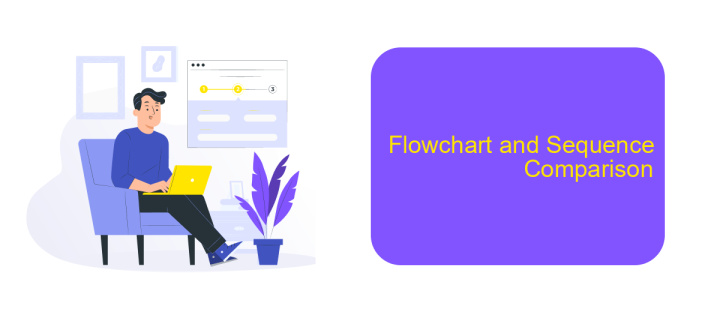Flowchart Vs Sequence UiPath
In the realm of robotic process automation (RPA), UiPath offers two primary methodologies for designing workflows: Flowchart and Sequence. Each approach has its own unique strengths and applications, making it crucial for developers to understand their differences. This article explores the key distinctions between Flowchart and Sequence in UiPath, helping you choose the most suitable method for your automation projects.
Introduction
In the realm of robotic process automation (RPA), UiPath stands out as a powerful tool for automating repetitive tasks. Two fundamental components in UiPath are Flowchart and Sequence, each serving distinct purposes in workflow design. Understanding their differences is crucial for optimizing automation processes.
- Flowchart: Ideal for complex workflows with multiple decision points and branching logic.
- Sequence: Best suited for linear, straightforward processes.
Choosing between Flowchart and Sequence depends on the specific requirements of your automation project. Flowcharts offer a visual representation that simplifies the understanding of complex workflows, while Sequences provide a streamlined approach for simple, linear tasks. By leveraging the strengths of both, businesses can enhance their automation efficiency. For seamless integration and workflow management, tools like ApiX-Drive can be invaluable, offering robust solutions for connecting various applications and automating data transfer.
Flowchart Activities

Flowchart activities in UiPath provide a versatile and visual way to design automation workflows. Unlike Sequence activities, which follow a linear, step-by-step approach, Flowcharts enable the creation of complex branching logic and parallel processes. This makes them ideal for scenarios where decision-making paths are required, such as handling different outcomes based on user input or integrating various systems. Each activity within a Flowchart can connect to multiple other activities, allowing for a more dynamic and flexible workflow design.
One of the key advantages of using Flowcharts in UiPath is their ability to easily integrate with external services. For instance, when setting up automation workflows that require data from multiple sources, services like ApiX-Drive can be invaluable. ApiX-Drive allows seamless integration between different applications and data sources, ensuring that your Flowchart activities can access and manipulate the required information efficiently. This capability significantly enhances the robustness and scalability of your automation projects, making Flowcharts a powerful tool for complex automation needs.
Sequence Activities

Sequence activities in UiPath are designed to execute a series of steps in a linear fashion. They are ideal for processes that follow a straightforward path from start to finish. Sequences are easy to understand and manage, making them suitable for simple automation tasks.
- Begin by dragging a Sequence activity from the Activities panel to the Designer panel.
- Inside the Sequence, add the activities you need to perform your task, such as data entry, file manipulation, or API calls.
- Configure each activity by setting its properties, such as input values and output variables.
- Use tools like ApiX-Drive to integrate external services seamlessly, enhancing the automation capabilities of your sequence.
- Run the sequence to ensure it performs the desired actions correctly, and troubleshoot any issues that arise.
Sequences are particularly useful for tasks that require a specific order of operations. By leveraging tools like ApiX-Drive, you can enhance your sequences with external integrations, making them more powerful and versatile. This approach ensures that even complex workflows can be automated with simplicity and efficiency.
Flowchart and Sequence Comparison

Flowcharts and Sequences are two fundamental components in UiPath that cater to different needs and workflow complexities. Understanding their differences is crucial for optimizing automation processes.
Flowcharts are ideal for complex workflows that require decision-making and branching logic. They provide a visual representation of the process, making it easier to understand and manage. Flowcharts are highly flexible and allow for multiple paths, which is beneficial for processes that involve numerous conditions and exceptions.
- Flowcharts: Suitable for complex processes with multiple decision points.
- Sequences: Best for linear, straightforward tasks.
- Flowcharts: Offer better readability and management of complex workflows.
- Sequences: Easier to implement and maintain for simple tasks.
Sequences, on the other hand, are best suited for linear and straightforward tasks. They are easier to implement and maintain, making them ideal for simple, repetitive processes. Choosing between Flowcharts and Sequences depends on the complexity and requirements of your workflow. For instance, integrating services like ApiX-Drive can benefit from Flowcharts due to their ability to handle complex decision-making and branching.
Conclusion
In conclusion, choosing between Flowchart and Sequence in UiPath depends largely on the complexity and specific requirements of the automation task at hand. Flowcharts offer a more visual and flexible approach, making them ideal for complex workflows that require decision-making and branching. On the other hand, Sequences are more straightforward and linear, suitable for simple, step-by-step processes where the flow is direct and uncomplicated.
Both Flowcharts and Sequences have their unique advantages and can be used complementarily to maximize efficiency in automation projects. For tasks that involve integrating multiple services and applications, tools like ApiX-Drive can further streamline the process by automating data transfer and synchronization, thereby enhancing the overall functionality of your UiPath workflows. Ultimately, understanding the strengths and limitations of each approach will enable you to make more informed decisions and optimize your automation strategies effectively.


FAQ
What are the main differences between Flowchart and Sequence in UiPath?
When should I use a Flowchart over a Sequence in UiPath?
Can I combine Flowcharts and Sequences in a single UiPath project?
How does error handling differ between Flowcharts and Sequences in UiPath?
What tools can help integrate UiPath with other software for automation?
Time is the most valuable resource in today's business realities. By eliminating the routine from work processes, you will get more opportunities to implement the most daring plans and ideas. Choose – you can continue to waste time, money and nerves on inefficient solutions, or you can use ApiX-Drive, automating work processes and achieving results with minimal investment of money, effort and human resources.

